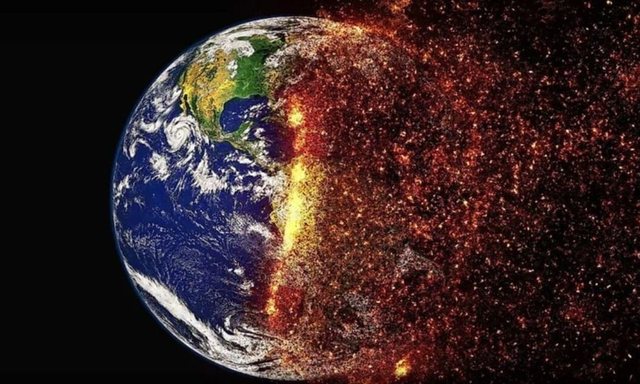
Researchers predict the end of life on Earth and it's closer than you think


A new study reveals that the future of Earth is more at risk than we ever imagined.
A new study reveals that the future of Earth is more at risk than we ever imagined. According to a team of researchers from the University of Bristol, a new supercontinent and extreme climate conditions could spell the end of life on Earth, and it's closer than we think.
The study, published in the journal Nature Geoscience, highlights the consequences of continental mergers and rising temperatures that could make Earth uninhabitable for humans and most mammals, setting the stage for an unprecedented mass extinction.
The Triple Hit of the Pangea Ultima Impact
One of the most striking aspects of the study is the predicted "triple hit" phenomenon, which refers to the three main factors contributing to the extreme heat that will characterize the Earth of the future: the phenomenon of continentality, a hotter sun, and increased CO2 levels.
As the continents gradually coalesce, the formation of a supercontinent will dramatically change the planet's climate. The size and shape of the continental mass would increase the phenomenon of continentality – a term used to describe how larger continental masses can create extreme temperature swings, both hot and cold, due to reduced oceanic influence. At the same time, the sun will continue to shine, releasing more energy, and carbon dioxide levels are expected to rise significantly due to geological processes such as volcanic eruptions.
"The newly emerged supercontinent will essentially create a triple whammy, including the effect of continentality, a hotter sun and more CO2 in the atmosphere, increasing heat for much of the planet. The result is a largely hostile environment with no food and water sources for mammals," said Alexander Farnsworth, the study's lead author and a senior researcher at the University of Bristol.
The end result of these interrelated factors is a severe heat wave that will destroy many species, including humans, who will struggle to survive in these extreme conditions.
Extreme temperatures and humidity are key to our destruction
Simulations predicted that future temperatures on Earth could regularly exceed 40°C to 50°C (104°F to 122°F), with even higher daily extremes due to intense heat and high humidity levels. This dramatic increase in temperature, combined with a lack of water sources and vegetation, would make survival nearly impossible for most mammals.
Humans, in particular, will face the challenge of maintaining a stable body temperature in such extreme heat, which will be exacerbated by humidity that prevents effective sweating, the body's main cooling mechanism.
The role of CO2 and volcanic activity in future heat waves
A critical element of the study's model is the projected increase in carbon dioxide (CO2) over the next 250 million years. As tectonic activity increases during supercontinent formation, large volcanic eruptions will release even more CO2 into the atmosphere, creating a greenhouse effect that will further intensify global warming.
The combination of rising CO2 levels and extreme volcanic activity will trap heat in the atmosphere, pushing global temperatures to uninhabitable levels and causing a mass extinction event for many species, including mammals.
The image shows the warmest, average, monthly temperature (Celsius) for Earth and the predicted supercontinent (Pangaea Ultima) in 250 million years, when it will be difficult for almost all mammals to survive.
What does this mean for the future of life on Earth?
While the study points to a bleak future, it also highlights the importance of understanding long-term trends in Earth's climate. Despite the inevitable rise in temperature in the distant future, the researchers emphasize that life on Earth will remain habitable for the foreseeable future, provided we mitigate the current impacts of climate change.
In conclusion, while Pangea Ultima and the associated extreme heat may seem like a distant scenario, the study provides a crucial reminder of how interconnected Earth systems are and how changes to our planet's structure and climate can have irreversible consequences. The findings suggest that the end of life on Earth will not be caused solely by human actions, but by the planet's natural forces, working over millions of years to create a planet that may no longer support life.

ideas
top
Alfa recipes
TRENDING 
services
- POLICE129
- STREET POLICE126
- AMBULANCE112
- FIREFIGHTER128




























